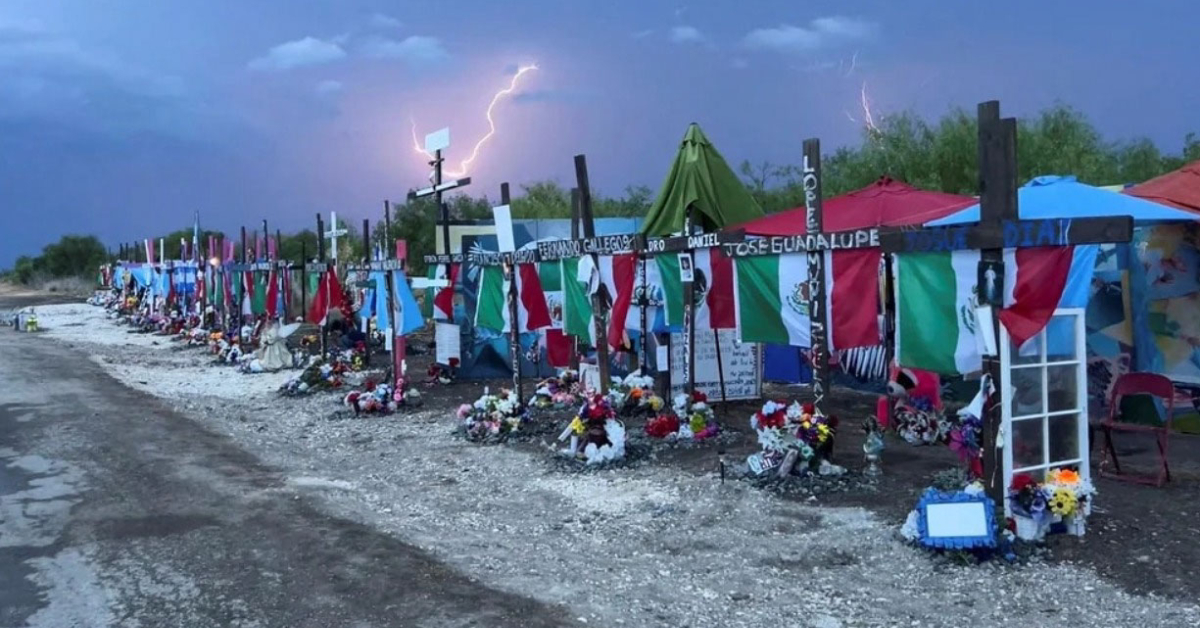The deaths and findings of migrants trapped in trucks, vans, suitcases, boxes, and illegal vehicles are news that is seen daily in Mexico and the US. Sometimes they are lucky enough to be rescued and cared for in time to become survivors. However, most of the time they die in terrible conditions without anyone being able to do anything.
To cross the border between Mexico and the US, migrants face the “coyotes” and the weather conditions in those areas, as well as the natural limits that divide the countries. These are two of the factors that cause the deaths of countless dreamers who yearn for better life opportunities and touch the “American dream” with their own hands.
The morgues in the US southern border states such as Arizona and Texas are overwhelmed and cannot cope with processing and storing the bodies of undocumented immigrants. Practically every day it is reported, for example, that a person drowned in the Rio Grande or ranchers discover a dead person inside their properties, as Tom Schmerber, sheriff of Maverick County in Texas, told the Efe agency.
Perhaps in our day-to-day, we do not imagine the large number of people trying to reach the US, tragedies do not only occur every few months or every year, human losses are not only those that appear in the media. Rather, too many men, women, children, and entire families die every day trying to cross “to the other side.”
One case would be the one that occurred on the morning of September 1, when nine immigrants died trying to cross the river in the Eagle Pass sector, which belongs to Maverick County, and 37 people were rescued from the waters in that incident.
Peruvian migrant Alan Vladimir Paredes Salazar, 38, was one of the deceased. His body was transferred to the Webb County Medical Examiner’s Office, according to his family, who hopes that the body will be repatriated as soon as possible; but the process could take time.
Specifically, the Webb County morgue is overwhelmed by processing the bodies of migrants constantly arriving from its border and neighboring counties.
Since last January and until the end of August, the deaths of 218 migrants have been registered in that county, exceeding the 196 deaths of 2021 during the same period. Due to the increase in deaths last year, the county morgue purchased five portable coolers, which are currently nearing full capacity.
In the border counties of Arizona, the situation of their morgues is not so different. According to figures from the Compassionate Borders group, from last January to the end of August a total of 126 undocumented migrants have died on the border of that state.
Generally, almost all the deceased are transferred to the Pima County morgue. “We also have four containers that are outside. Each one has a capacity for 80 bodies. Right now one of them is already at full capacity,” says Gene Hernandez, a coroner with the Pima County Medical Examiner’s Office.
Most of the corpses are not identified or recognized, since several only have a card with various numbers that indicate the date the remains were found, the location the body was found, and whether the body belongs to a man or a woman.
For their part, those in charge of the morgue commented that the process of identifying bodies is very complicated and slow. In addition to the fact that the state of decomposition greatly influences its recognition, since the Arizona desert simply “does not forgive” and in a matter of days the body decomposes to a point of practically “mummification” due to high temperatures, or it can even become eaten by wild animals.
Due to the lack of space and the continuous arrival of migrant bodies, the remains can only be kept in the freezers for four months. If they are not identified within this period they are cremated and only a piece of bone is preserved for possible future identification using DNA analysis.
According to the most recent figures from the Department of Homeland Security (DHS), during the current fiscal year, which ends on September 30, nearly 750 deaths of undocumented migrants have been recorded on the border with Mexico.
It is a new record that exceeds the 557 migrant deaths reported during the fiscal year 2021 by that federal agency.
To cross the border between Mexico and the US, migrants face the "coyotes" and the weather conditions in those areas, as well as the natural . . .












